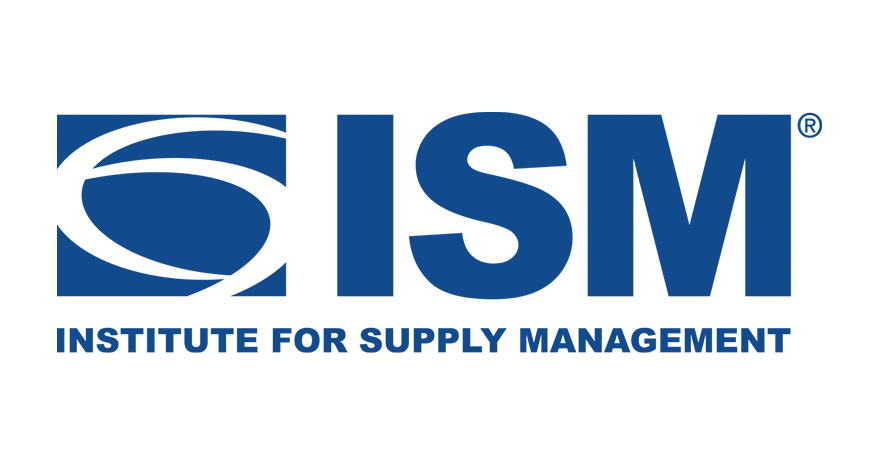February services sector activity shows continued growth, says ISM

Services economy activity remained solid in the early stages of 2023, according to the new edition of the Services ISM Report on Business, which was issued today by the Institute for Supply Management (ISM).
The Services PMI—at 55.1 (a reading of 50 or higher signals growth)—was essentially even with January’s reading with a 0.1% decline, growing, at a slower rate, for the second consecutive month. January was 6.0% above December’s 49.2, which was down 6.9% compared to November’s 55.5. ISM added that the overall economy also grew, at a slower rate, in February, for the second consecutive month.
The February Services PMI is 0.4% below the 12-month average of 55.5, with March 2022s 58.4 and December 2022’s 49.2 marking the respective high and low readings for that period.
ISM reported that 13 of the services sectors it tracks saw gains in January, including: Agriculture, Forestry, Fishing & Hunting; Public Administration; Construction; Professional, Scientific & Technical Services; Retail Trade; Utilities; Other Services; Educational Services; Finance & Insurance; Arts, Entertainment & Recreation; Real Estate, Rental & Leasing; Health Care & Social Assistance; and Accommodation & Food Services. The four industries with declines were: Wholesale Trade; Transportation & Warehousing; Information; and Management of Companies & Support Services.
The report’s equally weighted subindexes that directly factor into the NMI were mixed, from January to February, including:
-Business activity/production, at 56.3, fell 4.1%, growing, at a slower rate, for the 33rd consecutive month with 14 sectors reporting growth;
-New orders, at 62.6, grew 2.2%, growing, at a faster rate, for the second straight month, following a 15.2% increase, from December to January, with 14 sectors reporting growth;
-Employment, at 54.0, increased 4.0%, growing “faster,” following a flat January, with 10 services sectors reporting growth;
-Backlog of orders, at 52.8, fell 0.1%, growing, at a slower rate, for the 26th consecutive month, with five sectors reporting growth;
-Supplier deliveries, at 47.6 (a reading above 50 indicates slower deliveries), were down 2.4% compared to January, with three services sectors reporting slower deliveries;
-Prices, at 65.6, falling 2.2%, increasing, at a slower rate, for the 69th consecutive month, with 16 services sectors reporting growth; and
-Inventories, at 50.6, growing after contracting in January, with seven sectors reporting growth
Comments from ISM member respondents included in the report highlighted various issues being seen in the services sector.
An Educational Services respondent noted that there is some improvement in availability and delivery turns. And a Retail Trade respondent pointed to a continual effort to right-size inventory to match lower sales forecasts for the coming year. A Wholesale Trade respondent cited how business activity has improved slightly, from January to February, with faster supplier deliveries, and stabilizing fill rates from manufacturers, and customers being very cost conscious and looking for lower-priced product options.
Tony Nieves, Chair of the ISM’s Services Business Survey Committee, said in an interview that when looking at the services sector overall, the last two months of growth following December’s decline have quelled concerns stemming from December, a month in which he said companies took a collective breath, with January serving as a bounce back month that carried over into February.
“I believe that going forward the services sector is likely going to be on this path of steady incremental growth will be in the mid-50s range,” he said. “On one hand, is it the steady incremental growth or the acceleration of the economy? I believe the acceleration was already there, with December being a little blip.”
Looking at February’s New Orders output, Nieves explained that while the sequential gain was down compared to January, it remains at a very solid level, with the expectation that there will not likely be big directional spikes going forward as had been the case in prior months.
And the return to growth for Inventories represents what Nieves said is a mixed bag, with certain commodities that are still in short supply, coupled with long lead times, which is keeping some of the inventory buildup in growth territory. And, conversely, over the course of the pandemic, he noted that some companies loaded up on goods that are proving to be very difficult to move, like PPE gear that cannot be liquidated, due to the negative financial ramifications. What’s more, he added that inventory carrying costs, for difficult-to-move inventory, can account for 40% or more of total inventory value, including carrying costs.
Looking at February’s prices, Nieves said that they continue to see gains at a strong rate, as petroleum-based products have softened.
“The costs for most things remain up compared to just a few years ago, for certain,” he said. “The demand is there, with the demand-pull exceeding the capabilities of the suppliers right now in certain areas.”

Article Topics
Latest in Materials Handling
AutoStore to launch U.S. headquarters in greater Boston region Trew expanding manufacturing and development campus in southwest Ohio IFR: robot installations by U.S. manufacturing companies up 12 percent last year Geek+ and System Teknik deploy PopPick solution for pharmacy group Med24.dk Beckhoff USA opens new office in Austin, Texas Manhattan Associates selects TeamViewer as partner for warehouse vision picking ASME Foundation wins grant for technical workforce development More Materials HandlingAbout the Author
Subscribe to Materials Handling Magazine

Find out what the world's most innovative companies are doing to improve productivity in their plants and distribution centers.
Start your FREE subscription today.
April 2024 Modern Materials Handling

Latest Resources










